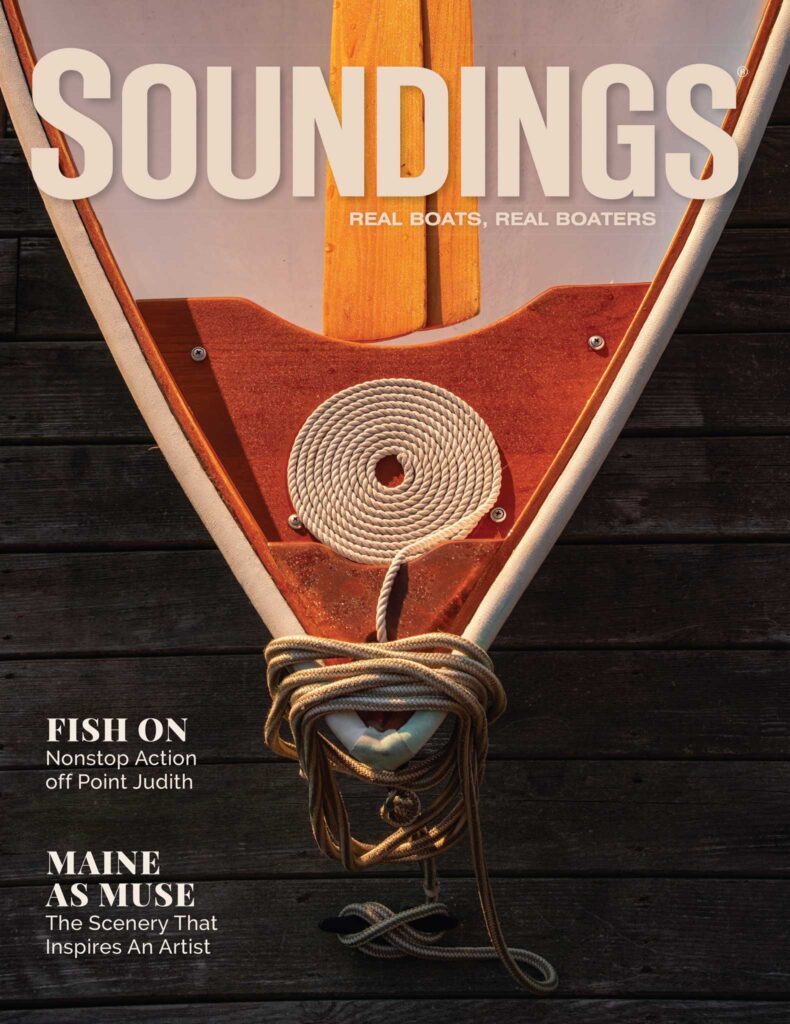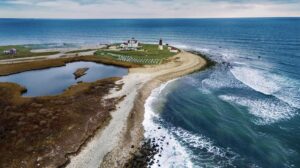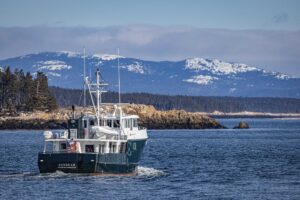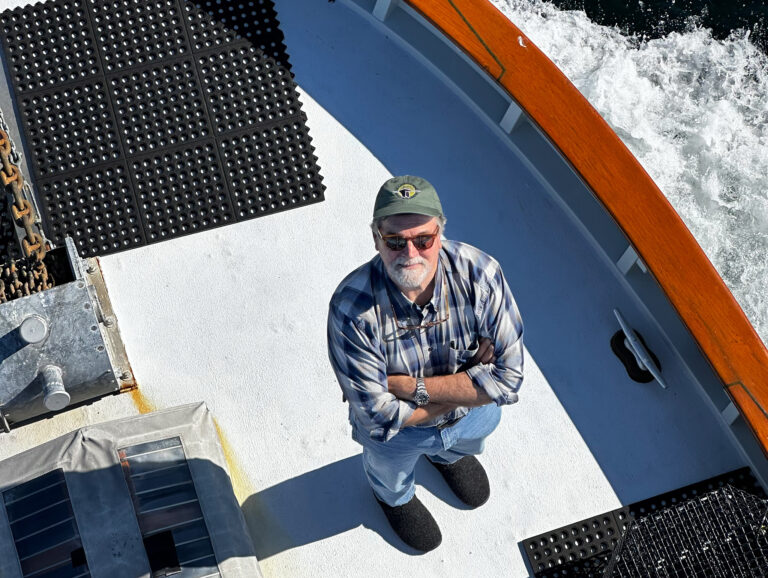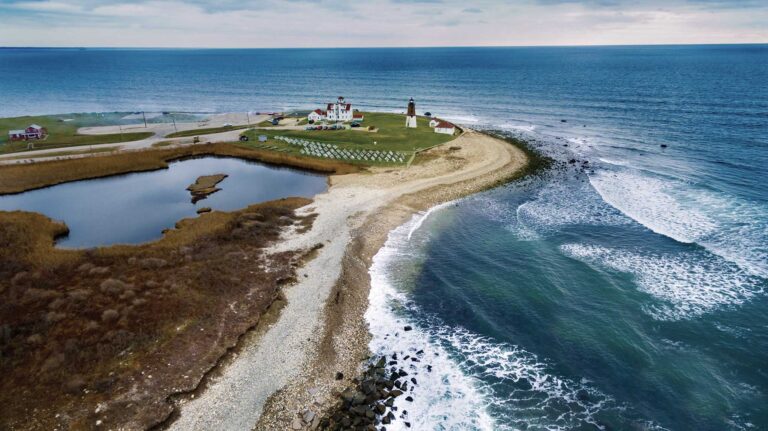In late March, President Trump proposed a budget that would slash the National Oceanic and Atmospheric Administration’s funding by 17 percent and eliminate several educational and research programs, if Congress approves. One of the proposed cuts would eliminate NOAA’s $73 million National Sea Grant College Program, which supports coastal research conducted through 33 university programs across the country, including every coastal and Great Lakes state, Puerto Rico, Lake Champlain and Guam.

The Sea Grant program, according to Trump’s budget plan, is a low priority that primarily has a state and local impact. “Mr. Trump is trying to eliminate us, but we are one of the solutions,” says Paul Anderson, director of Maine Sea Grant. “It’s pretty evident the process the administration has gone through to identify these cuts was not articulate. It was just line-item mathematics.”
Anderson says he is “mystified” by the Trump administration and feels its decision to cut the program puts the nation’s health and safety at risk. “The things we have created in this nation are through lessons learned — from creativity and mistakes,” he says. “You create electrical safety standards because someone was electrocuted. There’s a role government has. Trump’s approach is so naive to any of those structures that it puts our nation at risk for all kinds of things. Health, well-being and good, safe, clean domestic food and water are important.”
The president has prided himself on cutting bureaucratic red tape and connecting the right people to the right jobs to find the right solutions, says Sylvain De Guise of Connecticut Sea Grant. “It’s ironic,” he says. “There’s a disconnect between the president saying he wants to cut the red tape and help out the regular Joes and cutting our program. That is exactly what Sea Grant is really good at.”
How would the cuts affect boaters? Through water quality issues, says Chris Edmonston, president of the BoatUS Foundation. “It’s one of those behind-the-scene programs that people don’t give the recognition it deserves,” he says. “To lose a program like this might not have an effect this year, but it will certainly have an impact down the road. People will look around and wonder what happened.”
A spokeswoman for NOAA declined to comment.
During its 51 years, the Sea Grant program has created a network of more than 300 institutions and 3,000 scientists, engineers, educators, students and outreach experts working to address such issues as coastal hazards, sustainable coastal development and seafood safety. The program has tackled such issues as population growth and development in coastal communities; preparation and response to hurricanes, coastal storms and tsunamis; and understanding human interactions with the marine environment. The program also has provided research in fish and shellfish farming and fisheries management.
“We’ve been successful with linking universities and science with real-world problems,” Anderson says. “We’re good at bringing a scientist together with a fisherman to design better ways to catch fish. I know it’s a cliché, but instead of giving the fishermen a fish, we give them a fishing pole. We are good at getting people involved in solving their own problems.”
The program’s relationship to the communities it serves is simple, Deguise says: “We live here, we work here, we play here. Your problems are our problems.”

The Trump administration is overlooking much of what Sea Grant programs have accomplished, Anderson says, citing the safe seafood standard in the federal Hazard Analysis Critical Control Point program, which addresses food safety. “It’s relatively mundane, but it’s a great way of getting safe seafood,” Anderson says. “That’s something we take for granted. We have systems here that are safe. You go to the market here, and you’re safe when you buy mussels. You go to Beijing, and you take a risk.”
Mitigating coastal hazards is another key element of Sea Grant programs. “A lot of our states have a long history of working with hazards on the coast, on hurricanes and sea levels rising,” Anderson says. “This is significant. A lot of these towns are vulnerable.”
Along the New England coast, Sea Grant has helped states research, develop and support the production and culture techniques of native sugar kelp, leading to new kelp aquaculture businesses in Connecticut, New York, Rhode Island, Massachusetts and Maine. Another success story is sea kelp production, which is at an all-time high.
Sea Grant Connecticut has helped develop standard handling practices and guidance, and a processing and marketing hub for aquacultured kelp. The Connecticut program also created the Connecticut Shellfish Initiative, a multiyear effort to work with commercial and recreational shellfishermen, along with individuals concerned about shellfish reefs and restoration. Thirty-five recommendations were created.
“We just started to develop an implementation plan for achieving those recommendations,” says Nancy Balcom, associate director of Connecticut Sea Grant.
In the Florida Keys, Monroe County commissioners say that if the proposed budget cuts hold, they would lose a sponge-restoration project to help preserve water quality, an artificial-reef study that helped create underwater attractions and fish habitat, and a $75,000 allocation toward modeling the effects of sea-level rise.
Ironically, one area benefiting from the Sea Grant program is Trump’s own Mar-a-Lago resort in Palm Beach, Florida. Sea Grant helped Palm Beach and adjacent counties develop a regional climate strategy and reinforce storm defenses, according to ProPublica.
In Louisiana, Sea Grant helps schedule shrimp and oyster seasons annually and assists in marshland restoration. The program has defenders on both sides of the aisle there, Democrats and Republicans.
In Alaska, where Sea Grant helps fund research at the University of Alaska in Fairbanks, the program tracks the economic vitality of the seafood industry and measures the effects of climate change. “The program is dear to my heart,” says U.S. Rep. Don Young, a Republican from Alaska, in an April bipartisan letter of support. “We’ll continue to fund that. It works.”
In New York, several educators gathered at a recent seminar to discuss the proposed Sea Grant cut and how it might affect students and future scientists. “I mean, how do you replace that?” high school biology teacher Dan Mainville wondered on North Country Public Radio. “I don’t think you can. To remove that funding is ridiculous — counterintuitive.”
Twenty-three U.S. senators are calling on Trump to keep the $73 million in federal Sea Grant funding for university research into coastal environmental and climate issues. A letter sent to the president, signed by senators from 16 states, urges him to preserve the “federal-local partnership that funds 33 university-based research, extension and education centers.” The senators cited the benefits from $67.3 million in 2015 federal funding for Sea Grant programs, including an estimated $575 million in related economic activities. “Marine businesses and fishermen in coastal communities rely on the knowledge and skills of Sea Grant staff and outreach materials,” the letter states. “Zeroing out or cutting this funding would have a devastating impact, and we strongly urge you to reconsider this decision.”
Eight similar letters were sent to the White House Office of Management and Budget, and to the Senate Appropriations Committee. “The working men and women are also writing these letters,” Anderson says. “Those are the voices we want to hear.”
BoatUS is monitoring budget negotiations and trying to educate the Trump administration about the importance of the Sea Grant program. “They are very open-minded,” says Edmonston, who is also BoatUS vice president of government affairs. “If you can point to the value of something, they will listen. We can clearly show that this is a program that works, is well-supported and helps drive the economy. I highly doubt this cut stays in the budget.”
If the proposed cut remains, the Sea Grant program could be eliminated by the end of the summer.
This article originally appeared in the June 2017 issue.

